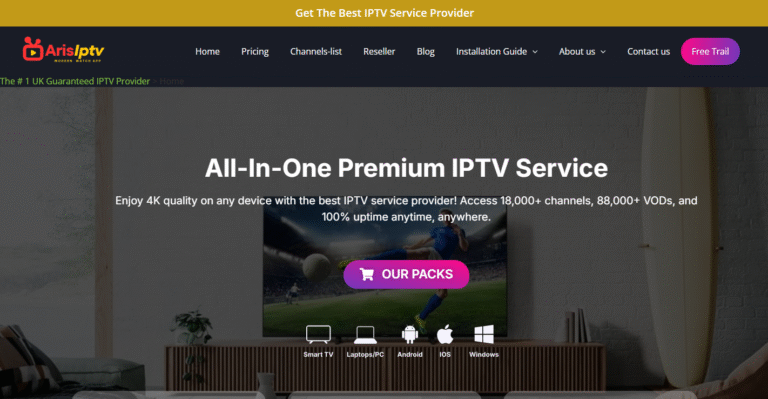Comprehensive IPTV Reviews: Choosing the Right Service
As the demand for IPTV services continues to rise, selecting the right provider can become overwhelming. Various options are available in the market, each with unique features, pricing structures, and channel selections. It is crucial to analyze these differences when choosing an appropriate IPTV service that aligns with individual viewing preferences and budget considerations.
One of the primary factors to consider is the channel lineup offered by each provider. Many mainstream IPTV services boast extensive channel selections, including premium, international, and local channels. Alternatively, niche providers might cater to specific genres such as sports, movies, or cultural programming. Understanding the variety of channels available can help users identify which service best suits their tastes.
Pricing is another critical element when evaluating IPTV services. While some providers offer budget-friendly packages, others may deliver a more premium experience at a higher cost. Users should consider their budget and the value offered by each service—often, higher-priced options come with added features like DVR services or HD streaming, which may enhance the overall viewing experience.
User experience shouldn’t be overlooked—this includes the service’s interface and its compatibility with various devices. A user-friendly interface is essential for seamless navigation, while compatibility with devices such as smart TVs, tablets, and smartphones ensures that users have flexible viewing options. Many IPTV providers also offer apps for numerous platforms, which can significantly enhance accessibility.
Lastly, customer support plays a vital role in the overall satisfaction with an IPTV service. Reliable providers usually offer multiple channels of support, including live chat, email, and phone support. Researching customer feedback and ratings can provide valuable insights into how well a service supports its users and addresses issues that may arise.
Step-by-Step IPTV Tutorials: Setting Up Your System
Setting up IPTV on various devices can seem daunting at first, but with the right guidance, the process can be straightforward and user-friendly. Whether you are using a smartphone, tablet, smart TV, or a streaming device, the following instructions will help you navigate the installation processes seamlessly.
First, identify the device you will be using to access IPTV services. For smartphones and tablets, begin by downloading a suitable IPTV application from the App Store or Google Play Store. Examples include VLC, Perfect Player, or IPTV Smarters. After installation, open the app and input your IPTV provider’s URL or M3U link to access the channels. Ensure that you have a stable internet connection for optimal performance.
For smart TVs, the steps may vary depending on the brand. Generally, you will need to download the IPTV application mentioned earlier from the TV’s app store. Once installed, follow a similar process as with mobile applications to enter your IPTV provider’s details. Some smart TVs may also support screen mirroring from a mobile device, allowing easier access to the IPTV content.
Streaming devices like Roku or Amazon Fire Stick offer unique installation steps. For these devices, you may need to sideload an IPTV application, as many do not support these apps directly from their marketplace. Detailed guides specific to your streaming device can be found online to assist in the sideloading process. After successfully installing the application, use your IPTV provider’s credentials to login and access live streams.
To ensure a seamless viewing experience, optimizing your internet connection is crucial. Connecting your device directly to a modem via Ethernet can improve stability over Wi-Fi. Additionally, regularly updating your IPTV application will help mitigate any software-related issues. Lastly, familiarize yourself with the legal guidelines surrounding IPTV usage to enjoy the content responsibly.






